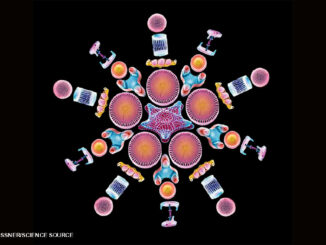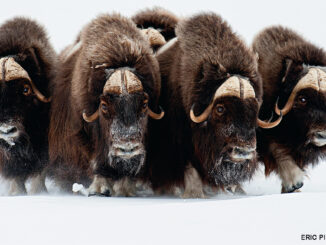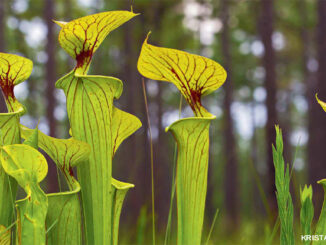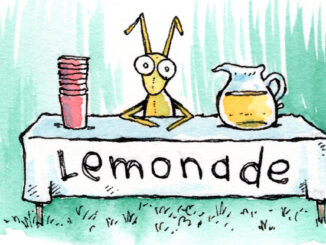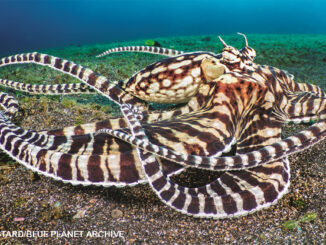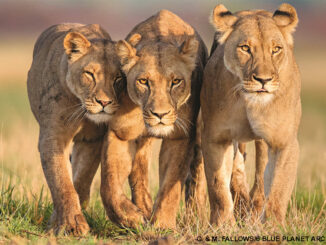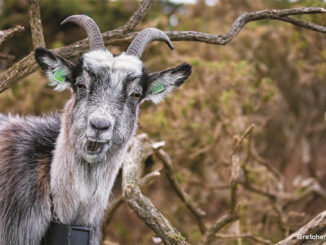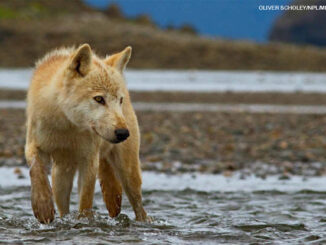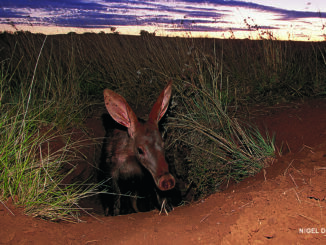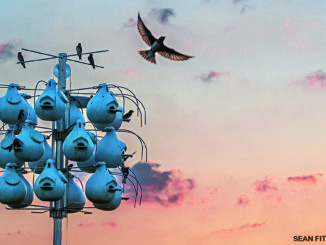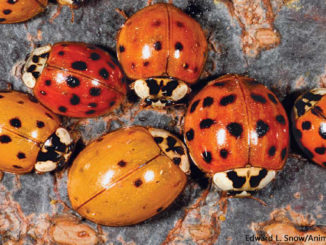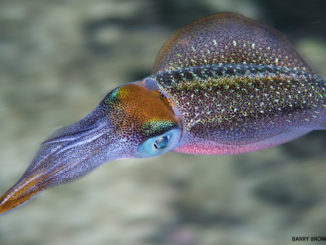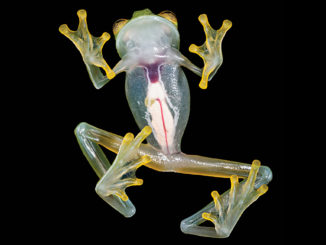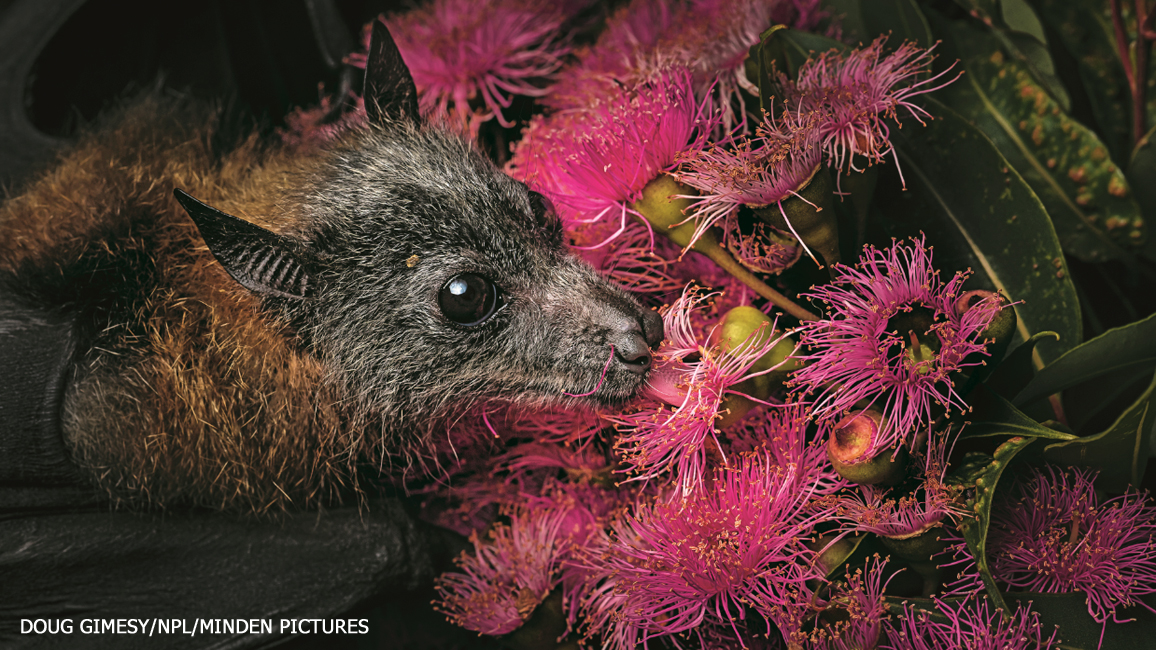
The Other Pollinators
By Kate HofmannBuzzing bees and flitting butterflies get most of the credit for pollinating flowers. But they’re not the only ones doing the job!

To make seeds, a plant must be pollinated. That’s when powdery pollen from the male part of a flower finds its way to the female part. Pollen sometimes moves from plant to plant in wind or water. But most often, it hitches a ride on a pollinator, an animal that transports pollen. Almost nine out of every ten flowering plants depend on animal pollinators.
Animals don’t pollinate on purpose. They visit flowers to drink nectar, to collect pollen for food, or to find shelter or mates. While they are there, pollen grains stick to them. Then, when they visit another flower of the same kind, some of the pollen grains brush off onto the female parts. Now the flower can begin making seeds.
Bees and butterflies do this very well. But there are lots of other important pollinators in the world, too.
BEETLES
These rose chafer beetles are eating pollen from a rose flower. There are more kinds of beetles than of any other insect. And many of those have been visiting flowers since ancient times. They usually eat the pollen or parts of the flower. Even so, some of them spread pollen as they go.
BAT
This gray-headed flying fox from Australia is poking its tongue into a eucalyptus flower. As it laps up nectar, sticky pollen attaches to its fur. Later, the pollen may rub off when it visits another flower. Bats pollinate many plants, from cactuses to bananas, guavas, and mangoes.
HOVERFLIES
Don’t be fooled by the stripes—these are flies, not bees. Flies are important pollinators, and hoverflies do more pollinating than any other kind of fly. As they crawl around on a flower feeding on nectar, tiny hairs on their bodies pick up pollen and carry it to the next flowers they visit.

KINKAJOU
Kinkajous live in the rainforests of Central and South America. These furry mammals go out at night to find fruit to eat and nectar to lap up. Here, one has just visited a night-blooming balsa flower. You can see the flower’s white pollen all over the kinkajou’s face!
GECKO
This ornate day gecko is sipping nectar in a flowering tree. The tiny lizard lives on only a few small islands in the Indian Ocean. Most geckos eat insects. But on islands where insects are scarce, geckos also eat nectar and fruit. And they pollinate some rare plants while they’re at it!
HUMMINGBIRD
This sword-billed hummingbird is sipping nectar from a passionflower. As the bird drinks, grains of pollen stick to its bill. Hummingbirds need a lot of sweet nectar to give them energy for flying. That means they visit many flowers, and they can move a lot of pollen as they travel.
HAWK MOTH
Many moths are pollinators, just as their butterfly cousins are. This fuzzy elephant hawk moth, shown very close up, is dusted with tiny pollen grains. The pollen stuck to the moth’s hairs while the insect sipped nectar with its long, tongue-like proboscis (pruh-BOSS-iss). (You can see the proboscis curled up below the moth’s head.)

WASPS
These wasps aren’t zooming in to feast on this orchid’s nectar. Instead, the flower is giving off a tricky odor that smells like a female wasp. And these male wasps are fooled by it! When the wasps move in close to investigate, they pick up pollen that they may later carry to another orchid.
TUI
The tui (TOO-ee) is an important pollinator in New Zealand. Can you see the yellow pollen stuck to this one’s face? Tuis are part of a family of birds called honeyeaters. In this case, “honey” means nectar, which is their main food.
BEE FLY
You might guess that this fuzzy, striped insect is some kind of bee. It’s actually a trickster called a bee fly. Being mistaken for a bee helps keep it safe from predators, but it can’t sting. That long proboscis is for sipping nectar, and its body and legs are sure to carry some pollen to the next flower stop.
MONKEY
See that face full of yellow pollen? That’s a clue to what’s on the menu for this green monkey. Many kinds of monkeys eat flowers, and it’s likely that some move pollen between flowers, too. Scientists still have a lot of questions about which animals are just visiting flowers and which are doing the important work of pollination. It can be a sticky situation!


